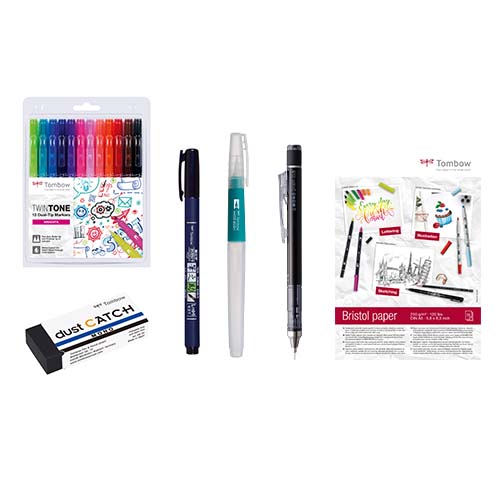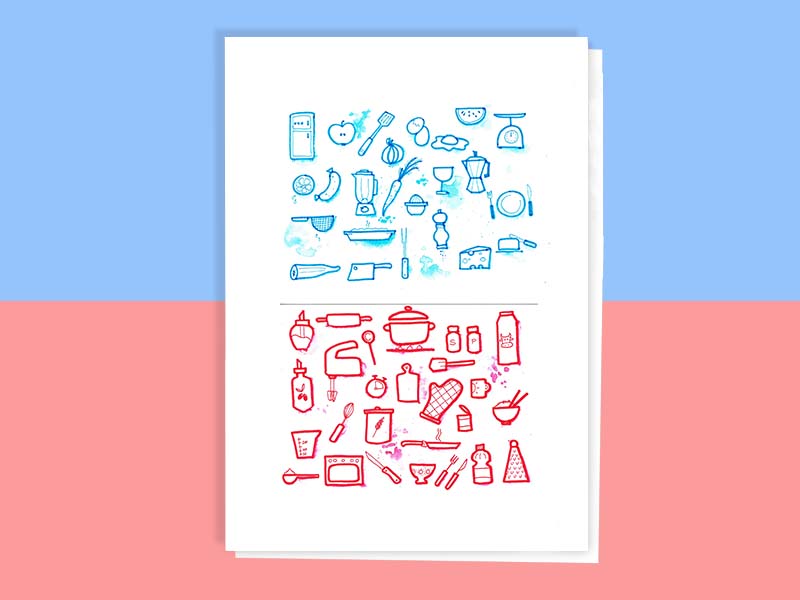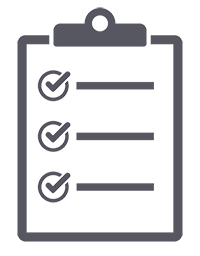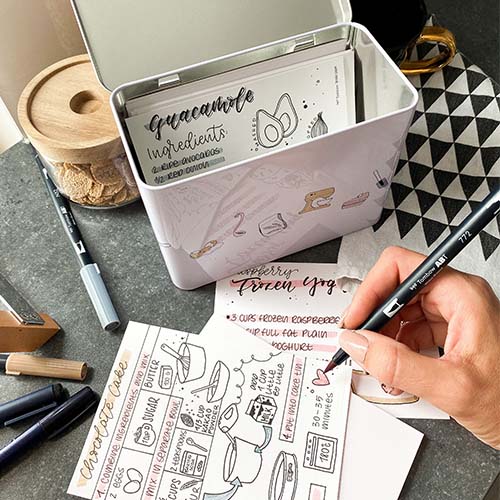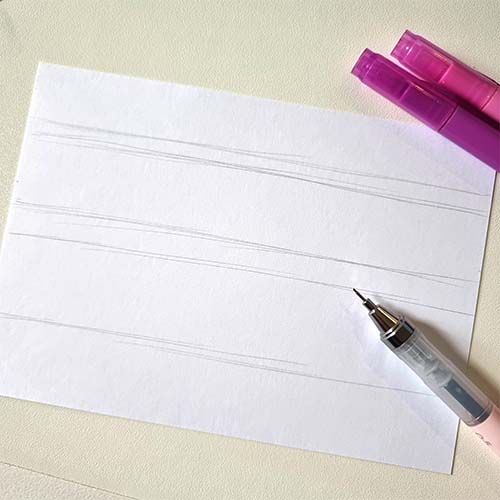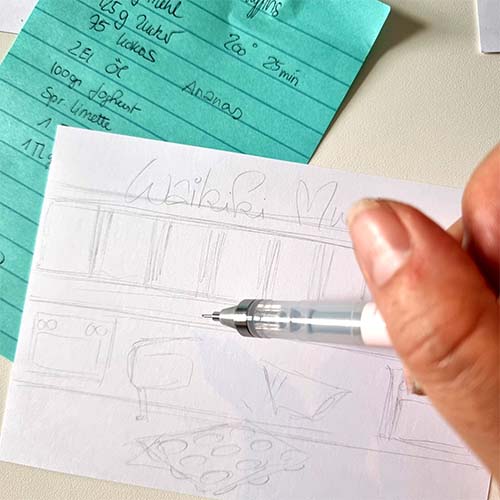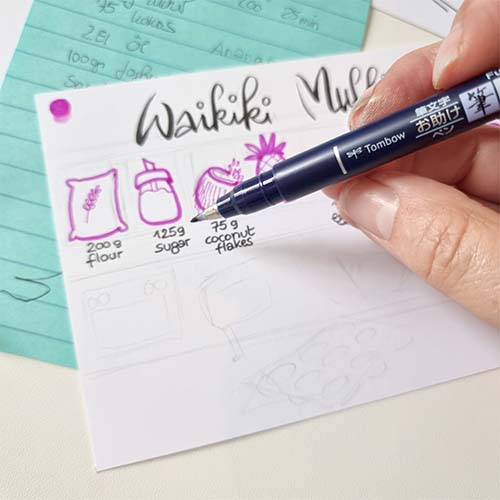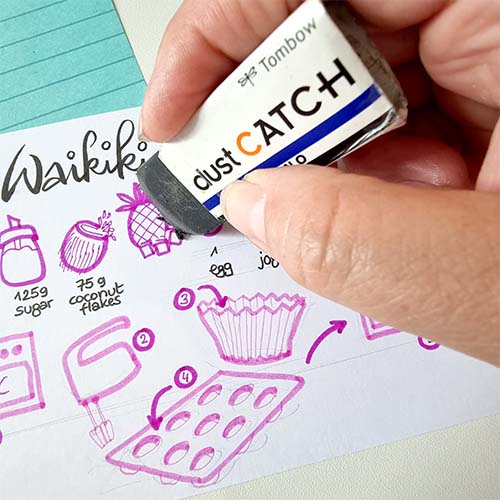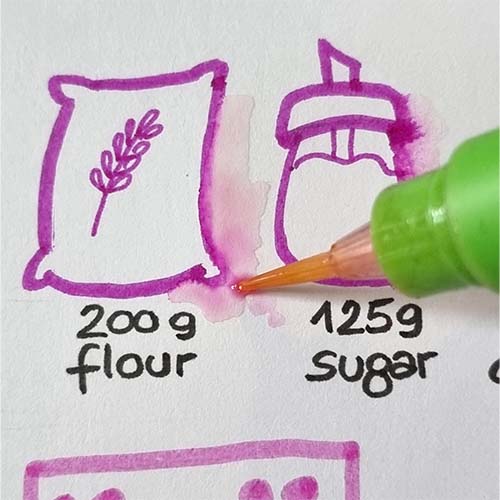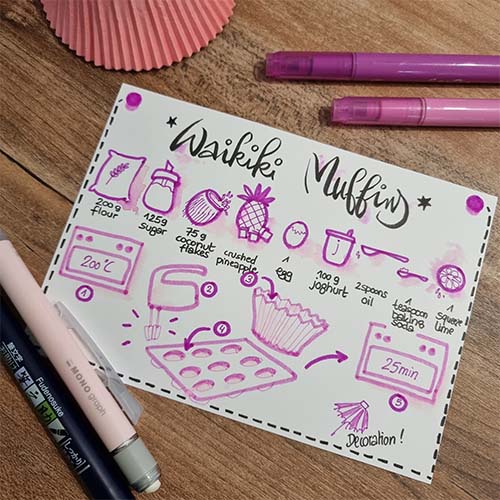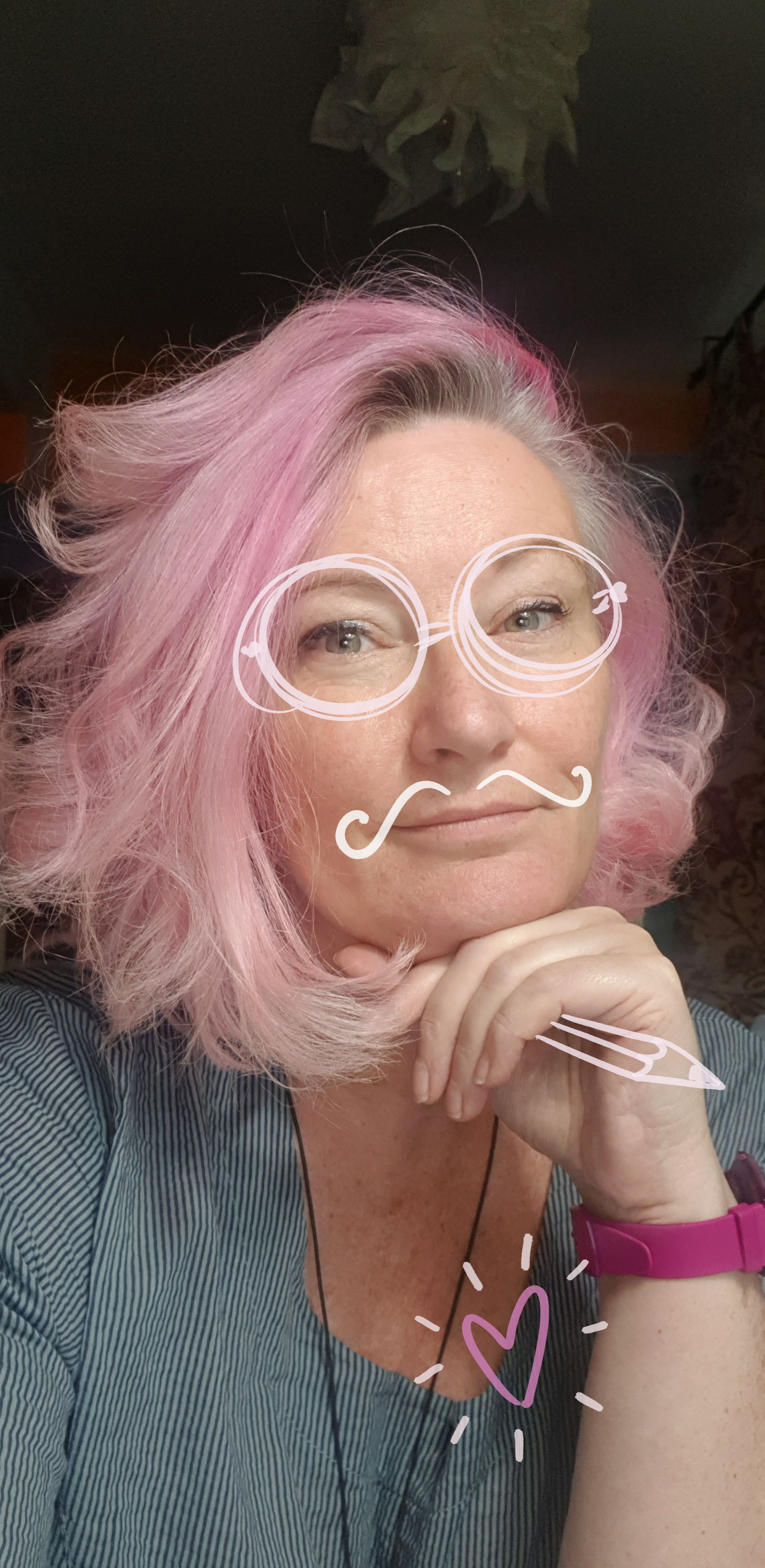5 Tips for short recipes
Do you want to record your favorite recipes on paper in a short and concise way and design your own recipe book? Then sketchnotes are just the thing! By using abstract symbols, arrows and illustrations you'll capture the most important information and understand it without any long accompanying texts.
Dagmar from AugeAnHirn brought along 5 easy tips on how to transform your favorite recipe into sketchnote-style. Still need some sketchnote inspiration? Then skip to the bottom of the post now and download Dagmar's free sketchnote template.
Hi, I am Dachma!
I am an illustrator and comic artist. With my husband I just moved into an ancient house in the middle of East Frisia. We renovated for a very long time and I waited even longer for my new kitchen to arrive. Now it is finally here and I would love to just cook all day. Or draw ... so why do not both together?
- 1x one really good recipe
- 1x pencil for preliminary drawing (best to use a hard grade rather than a soft one, as it can be erased more easily, e.g. H2)
- Tip: The refills for the MONO graph are available in different grades.
- 1x eraser for correcting & removing the preliminary drawing, like the MONO dustCatch
- 1x pen for writing, like the Fudenosuke Brush Pen
- Markers in your favorite colors like the TwinTones
- Paint brush with water or water tank brush
- Paper e.g. Bristol paper A5 or Bristol paper A6
However, it does make sense to organize your color scheme according to your own needs.
I generally do not like to stick too strictly to any recipe, and I prefer to improvise. Granted, that may go wrong at times. But if something has worked, it is very important to immediately write down the recipe. Otherwise, you may forget a few important ingredients during while indulging in your meal. I have thusly accumulated a considerable loose leaf collection. Little by little, I am now working my way through recording them.
Of course, it is fun to draw every detail of the recipe, but it is not not always helpful. Deciphering complex drawings often ends up being trickier than simply writing down the terms. So I have to decide if I am drawing my recipe for art's sake (i.e. the main point is that it looks great), or if I really want to use it as a kitchen aid. There is merit to both. I can also decide to either draw one or a few recipe ingredients or to put the actual preparation process onto paper.
If I want to spice up my recipe with a few sketchnote-style doodles, often less is more to avoid my recipe card from becoming crowded. So: Before I spend a long time on a text, I draw a pan, above it (or around it) I name the ingredients of the dish, and place a few arrows. Done ;-)
I do not have to draw the doodles any more complex than necessary.
Sidenote: What are doodles?
Originally the word is derived from "doodling" and means the carefree drawing and sketching of basic motifs. They are simple scribbles, and it is fine if they are not perfect. In recent years, a certain doodle drawing style has become established. Doodles are usually particularly flat motifs without shading and only their outlines are drawn.
So anyone can draw doodles!
Sidenote: How do I structure my sketchnotes?
Sketchnotes are supposed link mental images, ideas, and verbal or visual instructions with one another. A good sketchnote directs the eye. There are a few tricks to help you structure them.
- Size plays a decisive role. If something is capitalized or written in capital letters, we usually perceive it as important.
- Contrast is also a handy tool to indicate important elements of a sketchnote. Dark or colored items attract more attention.
- You should think about which emotions you want to elicit when using colors. Warm colors (red, yellow, orange) are often perceived positively and associated with warmth and calm. Cold colors (blue, green, purple) are more likely to be regarded as frigid and forbidding.
Try it out for yourself right now and share your recipe with the Tombow family at #tombowinspiration.
Dachma
-Dagmar Gosejacob
Dachma likes it colorful and actually draws everything. She also loves experimenting with new (and old) materials. She works as a freelance illustrator, draws and writes comics, gives workshops, illustrates books, and is on the road as a graphic recorder. She especially loves watercolor techniques, colored pencils, alcohol-based markers and (in her words): "...can't work without the Fudenosuke!"


